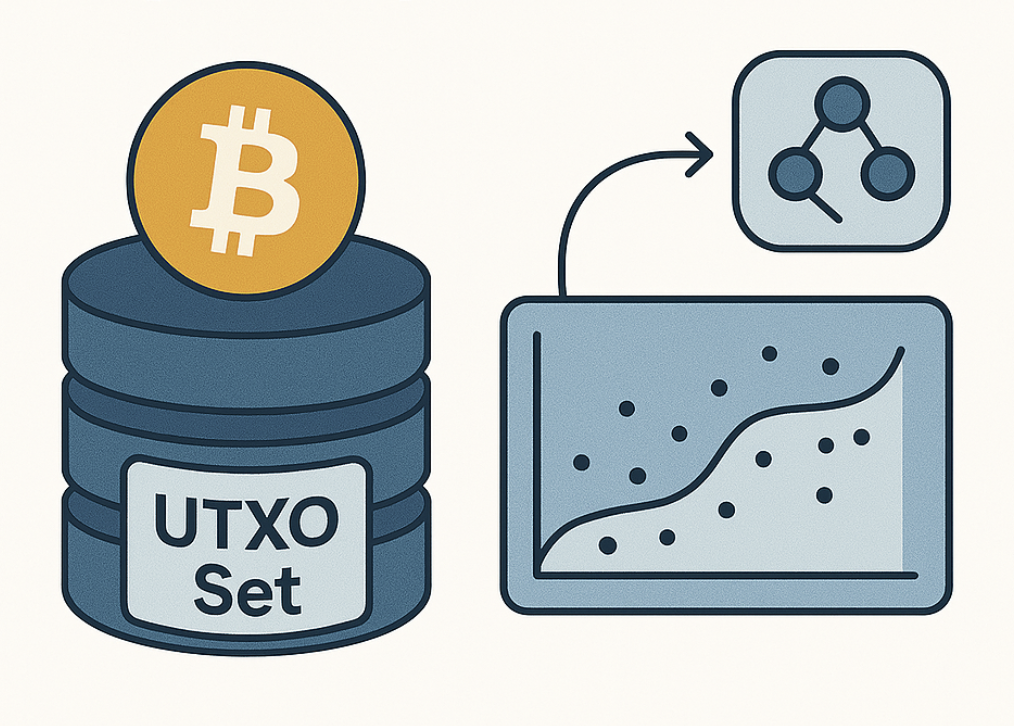
We’ve recently submitted our latest paper to the 2025 7th International Conference on Blockchain Computing and Applications (BCCA), which will take place in Croatia. In this work, we explore how machine learning can be used to improve one of the core components of the Bitcoin network: the UTXO set cache.
The problem
Bitcoin Core, the most widely used Bitcoin client, relies heavily on the UTXO set—a dataset of all unspent transaction outputs—to validate transactions. The problem is that this set has grown beyond 11GB, and only a small portion fits into memory. That forces nodes to perform frequent disk reads, which slows down validation.
Our approach
We developed a predictive model that forecasts which UTXOs are likely to be spent soon. By keeping those UTXOs in a dedicated prediction-based memory cache, we managed to significantly reduce disk usage in our simulation of Bitcoin Core.
The results? An average 18.62% reduction in disk accesses, which directly translates into faster block validation and lower hardware requirements for running a full node.
Why it matters
This kind of improvement makes full nodes more accessible to users with limited resources, helping to strengthen decentralization across the network. It’s a step toward making Bitcoin more efficient without compromising its core values.
You can read the full paper here: Predictive Caching for Bitcoin Core: Enhancing UTXO Set Management with Machine Learning.
For more info or if you’re working on something similar, feel free to get in touch: gorka.pineda@uab.cat
